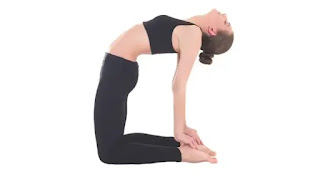While every organ of the human body holds equal importance, there are a few organs which if the malfunction can cause serious problems. Kidneys are one of those vital organs. Shaped like a bean, kidneys are present in the vertebrates inside the retroperitoneal space. Their importance is due to the function they perform of filtering the blood by removing waste and urine and balancing the salts, water and minerals in the body.
Due to escalating levels of pollution, sedentary lifestyle and poor food habits, the pressure on the kidneys has risen manifold. Around 10% of people of the world’s adult population are affected by chronic kidney disease which is majorly caused due to hypertension and diabetes. In such a scenario, it is important to take good care of your this organ. Yoga emerges as the best way out as it enhances overall physical well being by strengthening the internal organs. Here is a list of asanas which if inculcated in your daily routine can help boost your kidney health.
1. Padangusthasana or Big Toe Pose
It is one of the beginner asanas in Yoga, necessary to master to perform other higher-level asanas. People who have just started doing yoga and did not have any major exercising schedule earlier might have a stiff body and might not be able to perform this asana. However regular practice can make you master the pose in no time.
To perform this asana, just stretch your hands up while standing straight and slowly bend forward and try to touch your feet with your hands. If that was easy, try stretching more until you touch your chin on your knees or chest on your thighs. This easy to do asana comes with major benefits as it can stimulate your liver, kidney as well as spleen. The follow-up poses of Padangusthasana are Utkatasana and Trikonasana.
Other Benefits Of Padangushtasana
- The asana gives a good stretch to the back as well as legs. It strengthens their muscles and makes the body more flexible.
- It helps improve digestion and fights problems like chronic constipation and gas pains.
- Padangushthasana improves blood circulation, especially directing it towards the head and helps cure problems like headaches and insomnia.
Precautions
- Practice the pose carefully if suffering from any back or neck injury. It is inadvisable to do this asana if you are suffering from herniated or slipped disc.
- Do not overstretch as this might result in a sprain.
- Pregnant women are not advised to perform this asana.
2. Ardha Matsyendrasana or Sitting Half Spinal Twist
- It strengthens the back and hips muscles and also makes them more flexible.
- It helps in releasing built-up toxins of the body.
- The asana is especially beneficial for women as it can help relieve menstrual cramps and improves the functioning of the reproductive organs by increasing blood flow to the pelvic region.
- The asana is not recommended for people with any kind of serious injuries in the back and with problems like slip disc and sciatica.
- Pregnant women must practice the pose carefully.
- Do not twist or stretch suddenly to avoid a sprained back.
3. Naukasana or Boat Pose
- It strengthens the muscles of arms, thighs, shoulders and abdomen.
- The asana is quite effective in case a person wishes to get rid of their belly fat.
- The pressure that Naukasana puts on the stomach helps improve digestion and provide relief from chronic constipation and buildup of gas.
- Sometimes the naval centre shifts when the body suffers a sudden jerk. Naukasana can help shift the displaced naval back to its original position.
4. Ushtrasana or Camel Pose
- People in desk jobs end up with a bad posture which might be painful at later ages. Ushtrasana helps correct the posture and relaxes the back and neck muscles.
- The asana is an excellent one for people suffering from heart disorders as it reduces hypertension and improves blood circulation.
- As it greatly stretches the muscles of the neck region, Ushtrasana stimulates the thyroid glands and provides the much required hormonal balance.
- Ushtrasana can help you elevate spiritually as it provides a path to open the heart chakra.
- The asana must not be performed with an injured back and neck.
- If you are suffering from insomnia or migraine, you might consider avoiding this asana.
- The asana might be a difficult one for beginners, hence it is recommended to proceed slowly.
5. Pavanmuktasana or Wind Relieving Pose
- Pavanmuktasana is especially meant to help treat digestive disorders like constipation and gas pains.
- It improves blood circulation to the pelvic region and improves the functioning of the reproductive organs.
- Women with menstrual disorders must practice this asana regularly for some relief.
- Do not practice this asana if it strains your neck too much.
- People suffering from piles or hernia or undergoing any abdominal surgery must not do this asana.
- Pregnant women must practice the asana carefully, if possible under the guidance of a teacher.





